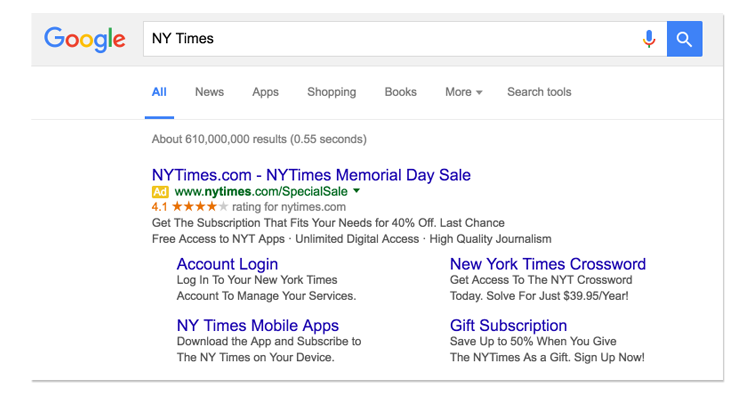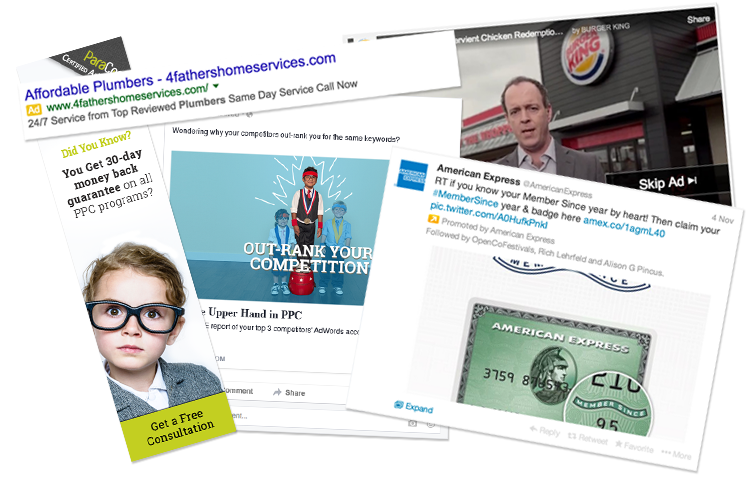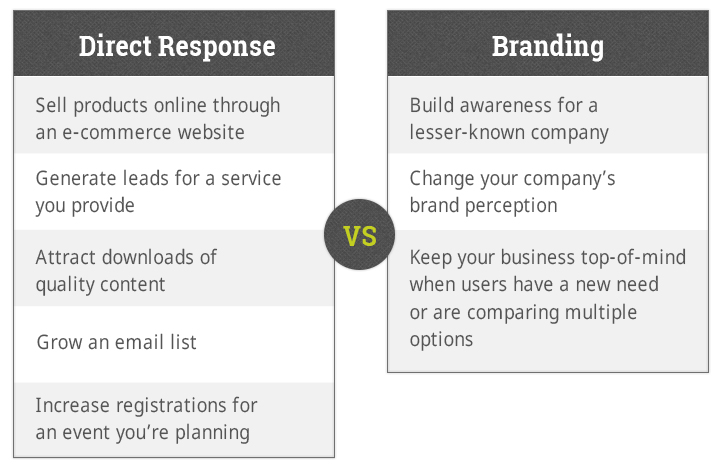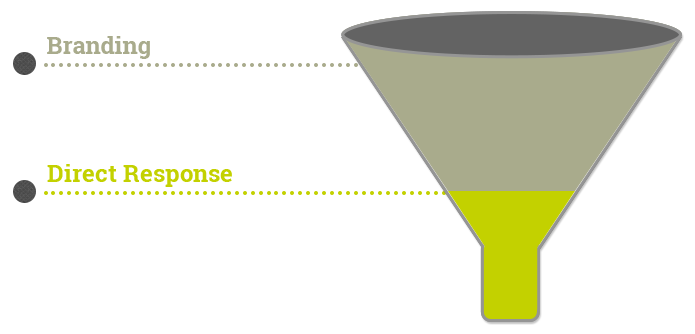What comes to mind when you think about pay-per-click advertising (PPC)?
You might imagine banner ads or Google listings. If you’re familiar with digital marketing, you might even think of Facebook ads or YouTube pre-roll ads.
Regardless of ad type, when PPC’s on the brain, most people think of clicks. Getting clicks is the whole point of PPC, right?
Actually, that’s just part of it. Sometimes, you want to generate as many qualified leads as possible. But other times, you might be focused on introducing your brand to potential customers for the very first time.
PPC can work in various parts of the sales funnel. Certain types of campaigns work better for building brand awareness in the early stages, and others work better for encouraging potential customers to take action once they’re already familiar with your company.
How do you know which type is best for your needs? Let’s discuss.
Direct response vs. branded campaigns
PPC is generally associated with direct response campaigns, which focus on getting the user to complete an action. The action may be buying a product or requesting more information.
Direct response ads normally have a clear call-to-action.
Unlike a direct response campaign, branding campaigns often don’t focus on immediate sales or conversions. It’s about building trust over time.
Because of this, performance isn’t always measured by clicks or conversions. Instead, impressions (or views of the ad) might be the desired outcome. The decision to use each strategy depends on your goal.
What about brand keywords?
When it comes to PPC, branded ad campaigns aim to take control of brand keywords, which are keywords that contain your brand name.
Bidding on a brand keyword involves optimizing your campaign so that anytime someone searches for your company or product, your name shows up instead of a competitor or a generic result.

Brand keywords have a number of benefits:
- If your company name includes high-level industry terms such as “Arizona Plumbing,” buying your brand name will ensure you appear when someone is looking for your business
- Brand keywords tend to be more affordable to buy than non-branded keywords since there are normally less companies competing for them.
- Bidding on your own brand keywords protects your company if a competitor buys ads for your company’s name
It may also be helpful to bid on your own brand for direct response campaigns if you aren’t ranking highly in organic search results. That way, users can easily find your site when they type in your company name and are ready to buy.
When should you use a branding vs. direct response campaign?
The answer isn’t always one or the other – sometimes it’s both. These two types of ads are best used together in a cohesive campaign strategy.
Think of it this way: Branding campaigns work well at the top of the sales funnel, introducing people to your brand. Direct response campaigns move them to action later.
Let’s say you use a branding campaign to get more exposure. It might involve a display ad using Google AdWords or even a pre-roll ad that plays before a YouTube video.
These ads introduce your company to potential customers, entice them to click through to your website, and help them recognize you in the future.
Then, you can use a direct response campaign to motivate them to take action. This might involve re-targeting with Google AdWords or serving highly targeted ads on Facebook. Because they’re already familiar with your brand, these users are considered warm leads, and they’ll be 3 times more likely to take action.
How’s your PPC campaign going?
Whether you’re considering branded or direct response ads, the ParaCore team can help you reach your business goals with expertly crafted campaigns. Reach out for a free consultation, and we’ll let you know exactly how we can win new leads for your business.
Related Posts
- What Is The Difference Between PPC and SEM?
- PC Audit Handbook: How to Analyze Your PPC Campaigns
- The Best PPC Tools of 2022, As Told by PPC Experts
- Beginner’s Guide to UTM Tags & Tracking
- Generate Leads with Facebook Lead Ads
- Cost-per-click vs. cost-per-acquisition: Are you tracking the right PPC metrics?
- How Does Pay Per Click Work?
- Benefits of PPC
- Why Should I Invest in PPC?
- What is Google PPC Advertising?
- Facebook Retargeting Strategy
- Introduction to ManyChat
- Case Study: Return on Ad Spend Optimization
- 🎁🎄 Holiday Ad Spend Strategy
- Should You Be Running Branded Ads?
- SEO vs SEM
- CTAs for YouTube Ads
- Case Study: 258% Increase in Conversions
- Traffic Campaign Strategy
- No Captions on Facebook Ads or YouTube? You’re Killing Performance
- LinkedIn InMail Website Re-targeting







